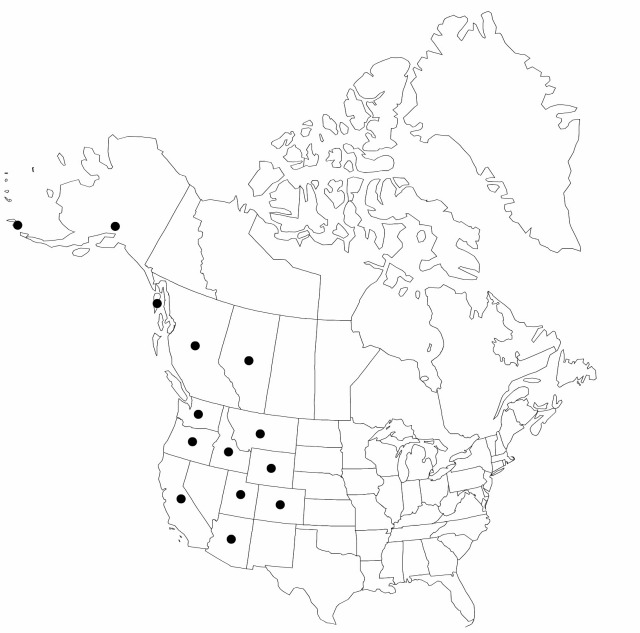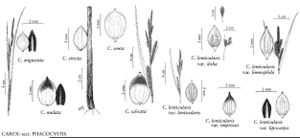Carex lenticularis var. lipocarpa
Syst. Bot. Monogr. 7: 67. 1985.
Culms 15–90 cm. Leaf-blades 2–4 mm wide. Inflorescences: peduncle of proximal spike 1 cm or longer; proximal bract redbrown at base, 1.5–3 mm wide. Spikes: proximal 3–7 spikes pistillate, 1.5–2.5 cm × 2.5–4 mm; terminal spike staminate. Pistillate scales redbrown or black. Perigynia 5–7-veined on each face, ovoid or ellipsoid, 2–3.5 × 1–1.8 mm; stipe 0.2–0.5 mm; beak redbrown, 0.1–0.5 mm. 2n = 92.
Phenology: Fruiting Aug.
Habitat: Lakeshores, wet meadows
Elevation: 0–3000 m
Distribution

Alta., B.C., Alaska, Ariz., Calif., Colo., Idaho, Mont., Oreg., Utah, Wash., Wyo.
Discussion
Carex lenticularis var. lipocarpa is the most abundant member of the species in western North America. It is distinguished from the other western taxa by the green, short-stipitate, ellipsoid perigynia and the elongate inflorescence; it is distinguished from the eastern var. lenticularis by the black scales and the red-brown beak orifice.
Despite the morphologic similarity of Carex lenticularis var. lenticularis and C. lenticularis var. lipocarpa and the apparent intergradation where the two ranges come into contact, there appears to have been some divergence in chromosome numbers.
Selected References
None.
Lower Taxa
"shortened" is not a number.
